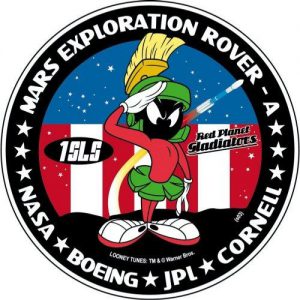Spirit Rover | Fun Facts About The Mars Exploration Rover
The Twin That Got Beached!
The Spirit Rover is one of two Mars Exploration Rovers (along with its twin Opportunity) sent to the Red Planet in 2003 by NASA. Solar powered, the little 6-wheeled rover far outlasted its planned 90-day mission before becoming stuck in soft sand. Despite extensive efforts to release the rover, the last communications with Spirit were received over 6 years after it landed!
Spirit Rover Fast Summary Facts
- Type: Lander/Rover
- Destination: Mars
- Status: Completed
- Rover Weight: 185 kg (408 lbs)
- Launch Location: Cape Canaveral, Florida
- Launch Date: June 10th 2003
- Arrival Date: January 4th 2004
- End Of Mission: March 22nd 2010
- Distance Covered: 7.73 km (4.8 miles)
- Mission Duration: 6 years, 9 months and 12 days
Cool Fun Facts All About The Spirit Rover Mission!
- During the 2003 Mars-Earth launch window, NASA sent two identical solar-powered rovers as part of the continued rover-based exploration of Mars.
- The scientific objectives of the Spirit mission was to locate and study a variety of rocks and soils related to the past water activity on Mars. This is because water is important for the existence of life as we know it.
- The Spirit Rover (and its twin, Opportunity) are six-wheeled, solar-powered robots standing 1.5 meters (4.9 ft) high, 2.3 meters (7.5 ft) wide and 1.6 meters (5.2 ft) long with a mass of 185 kilograms (408 lb).
- Both the Spirit Rover and Opportunity Rover have fragments of metal from the World Trade Center incorporated into their cable shields as a tribute.
- Spirit’s instruments are located in two places; on top of its mast are the rover's cameras with its scientific instruments located at the end of its arm.
- Spirit has a top speed of 0.05 m/s or about 0.18 kph (0.11 mph)! Only just faster than a snail!
- It can also get very cold on Mars at night, so Spirit has a small radioisotope heater (RHU) – basically a small nuclear heater - to heat its critical systems!
- Originally the surface rover mission was planned to only last 90 Mars days (or about 92 Earth days!).
- Amazingly the Spirit Rover operated for over 6 years 2 months and 18 days (2269 days) on Mars’ surface – over 25 times longer than planned!! This is longer than the Viking 2 lander, but just short of the Viking 1 lander.
- The Spirit Rover also covered 7.73 kilometres (4.8 miles) of driving instead of the planned 600 metres (656 yards)!
- More energy was received from the rover's solar panels than expected due to small ‘dust devils’ (and the Martian winds) which cleared dust off the panels that reduces their power generation.
- In 2004, Spirit observed Mars' moon Deimos transiting the Sun. It also took the first photo of Earth from the surface of another planet!
- On March 13th, 2006, Spirit’s right front wheel stopped working, so the engineers had to drive the rover backwards, dragging the dead wheel behind it! This lead to the discovery of white silica sand under the dusty red surface!
- On May 1st, 2009 Spirit became stuck in soft sand, with a rock under its belly. Despite NASA scientists trying for 9 months, they could not get the little rover free.
- Communication with Spirit was lost on March 22nd, 2010 and again despite attempts to re-establish contact the rover was not heard from again.
- On May 24th 2011, NASA stopped their efforts to reconnect with the rover which represented the end of the Spirit mission! The Spirit Rover will continue to sleep on the desert plains of Mars until one day a human explorer may visit the little rover.
- By the end of its operational life, Spirit had transferred 128,224 pictures of the Martian surface back to Earth! Pictures of spectacular colour panoramics, Martian sunsets and even small whirlwinds blowing across the Martian desert!
- In honour of Spirit’s contribution to space exploration, the rover has had a small asteroid named after it.
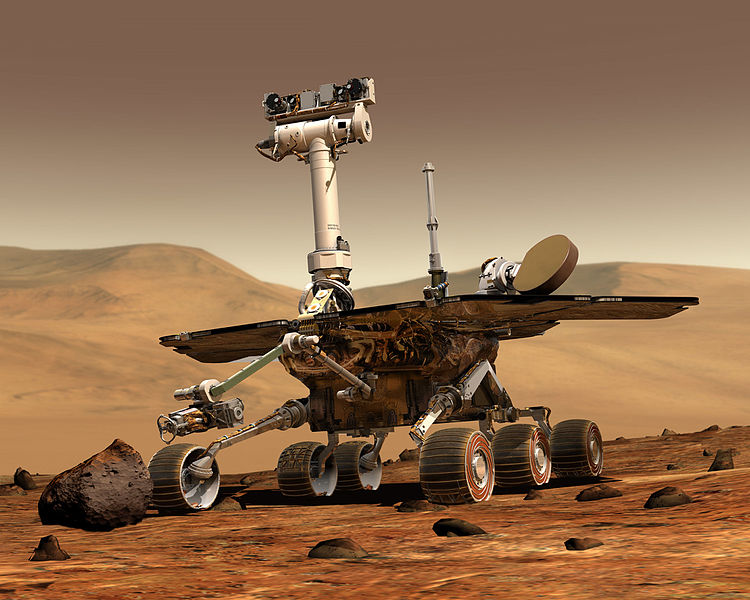
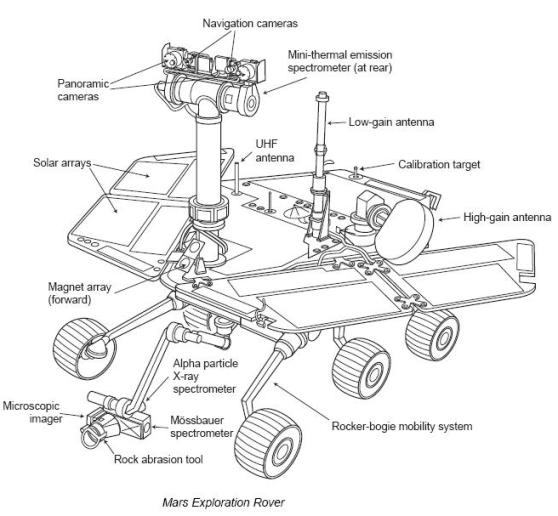
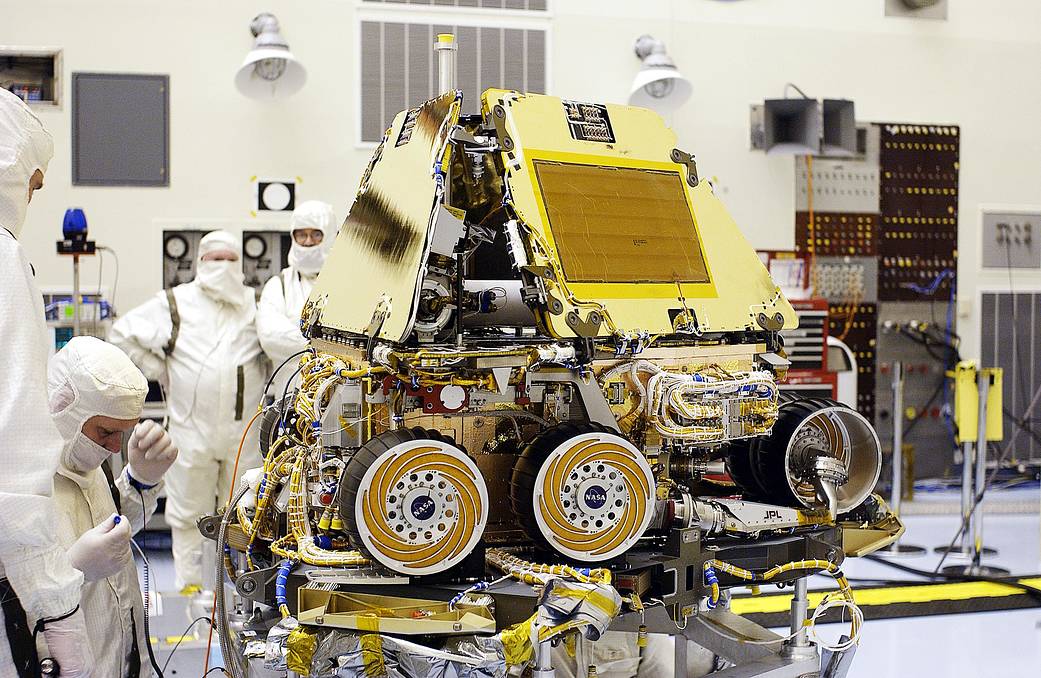
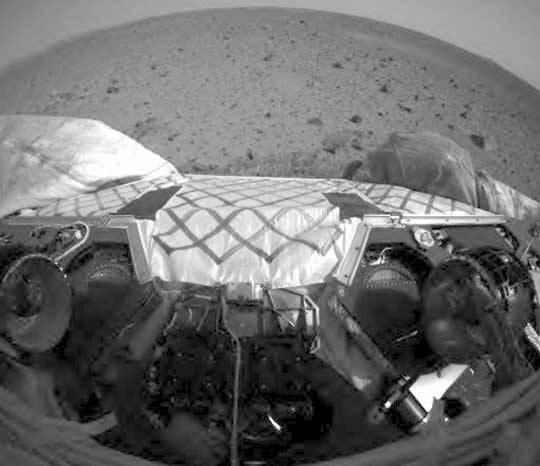
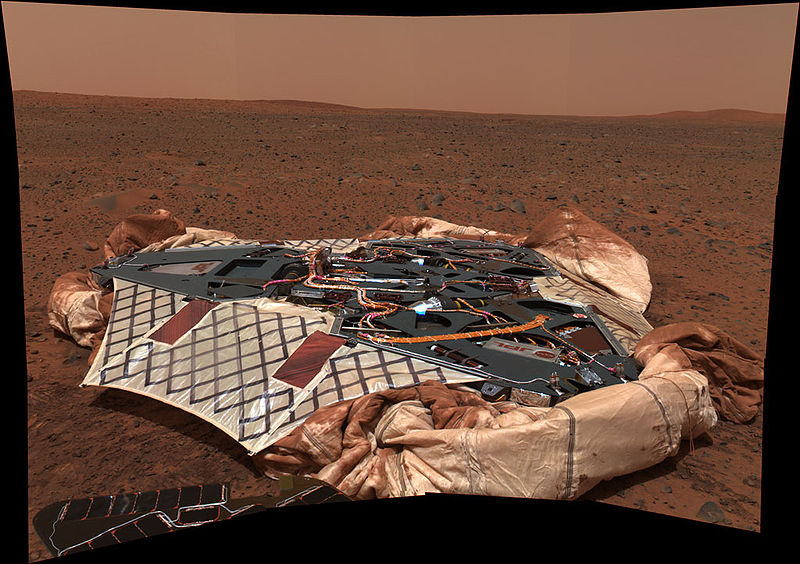
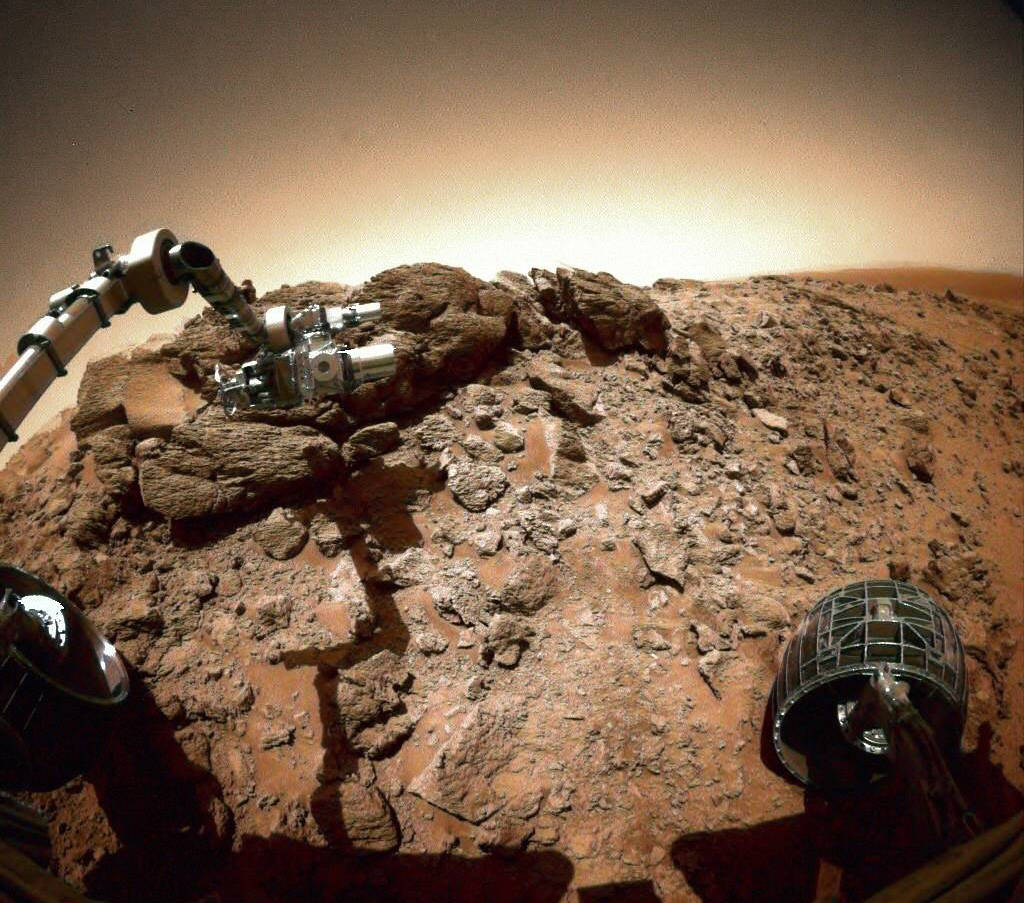
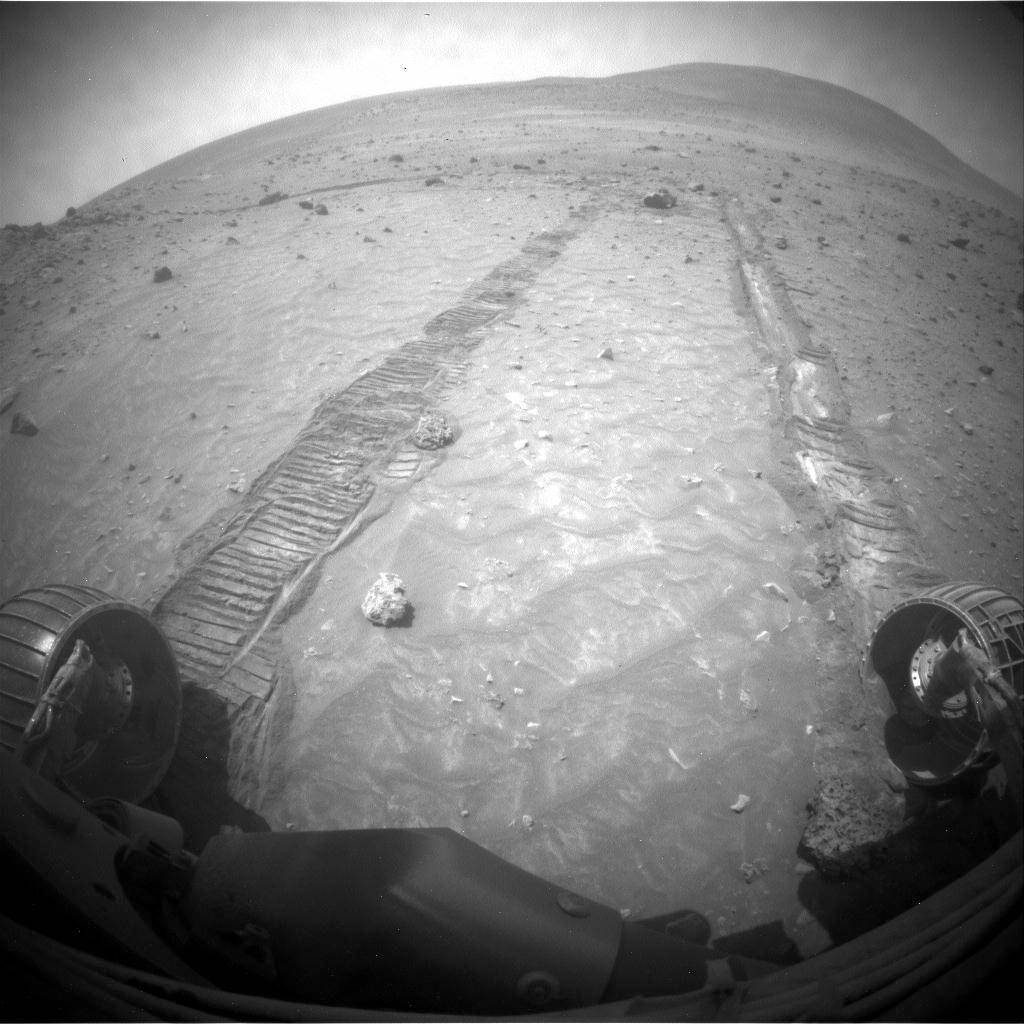
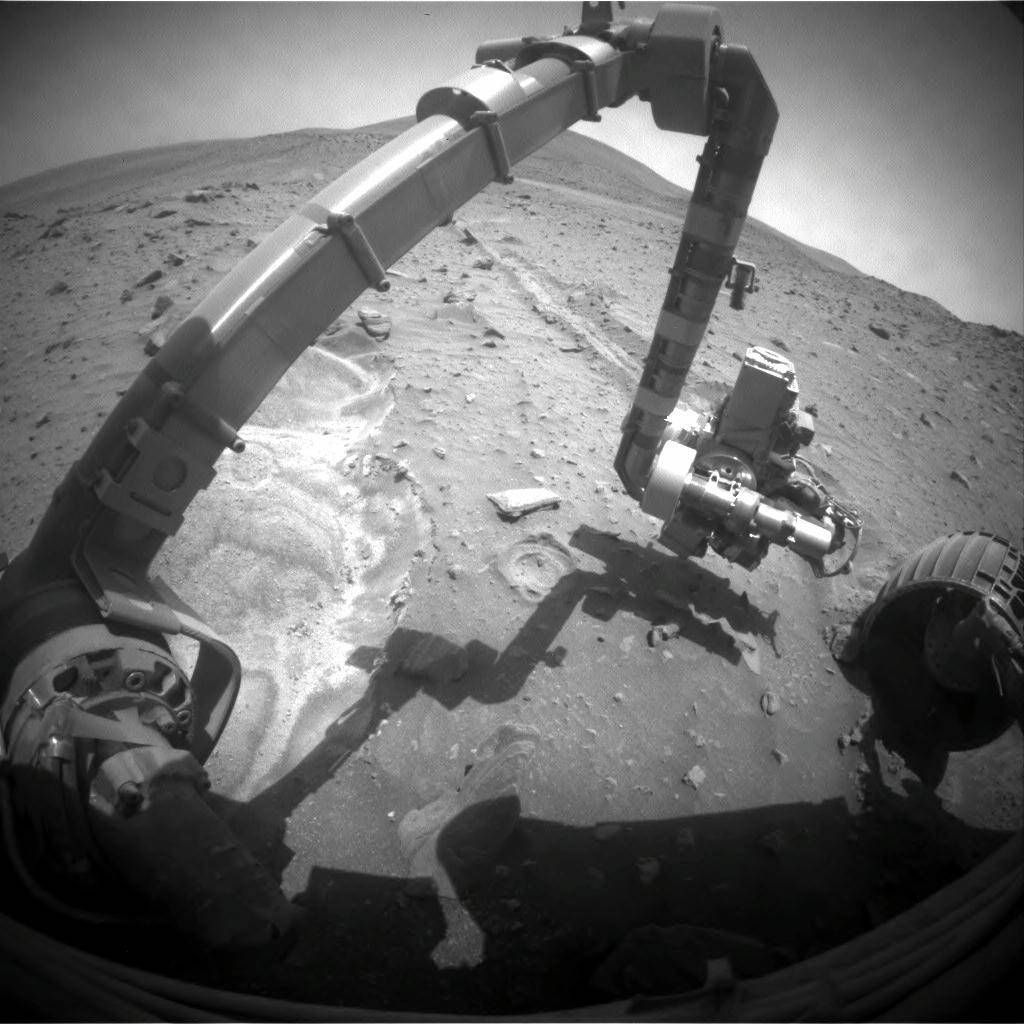
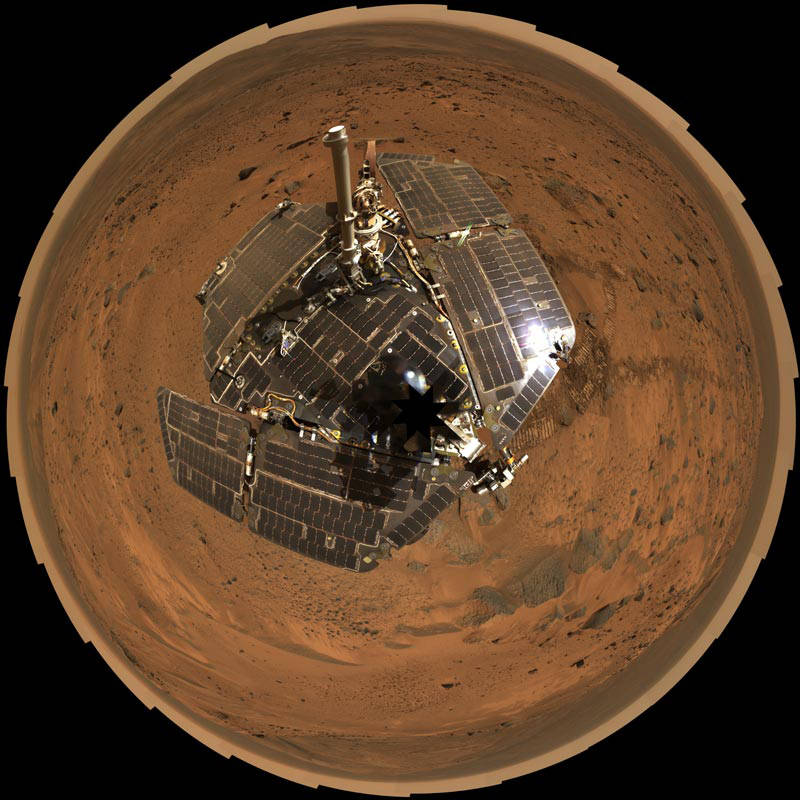
Mars Exploration Rover
Schematic
Mars Exploration Rover
Spirit Stands
Spirit Lander Pan
Drilling Mars
Driving Backwards
Robotic Arm
Spirits Self-Portrait

